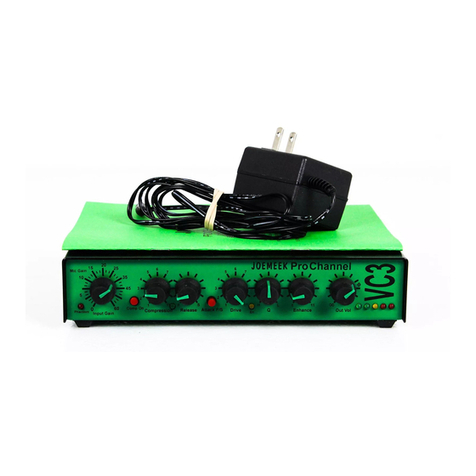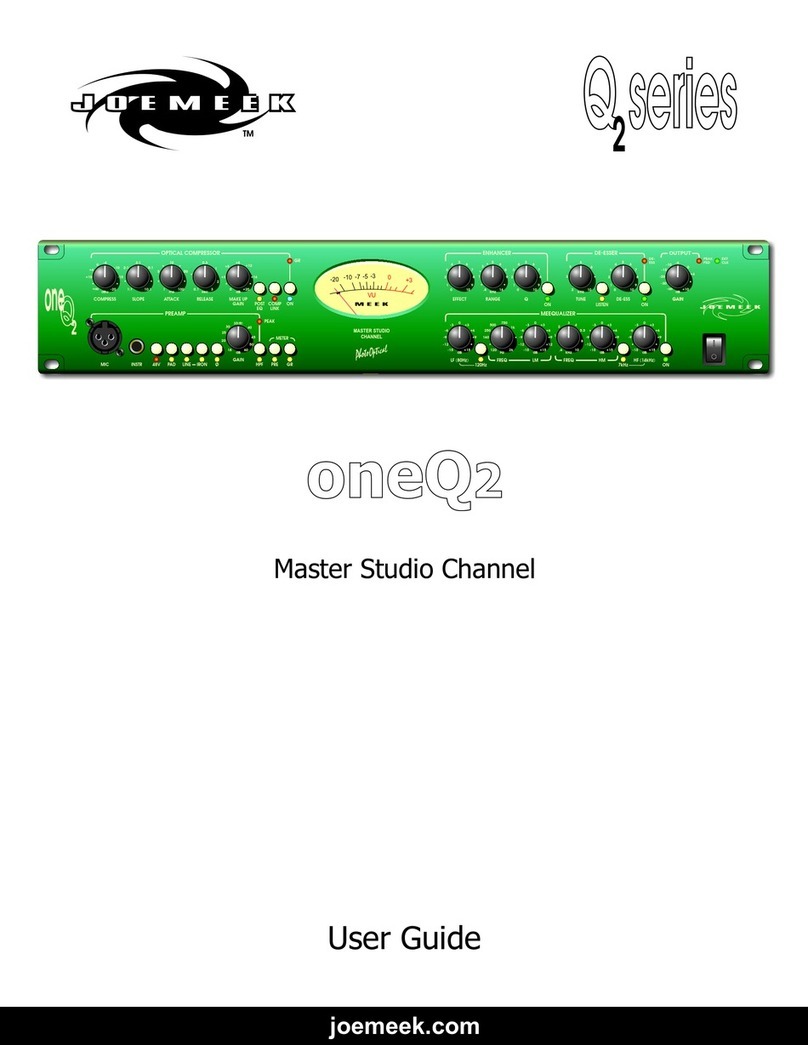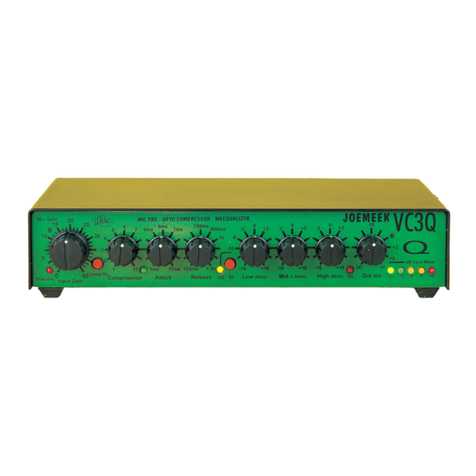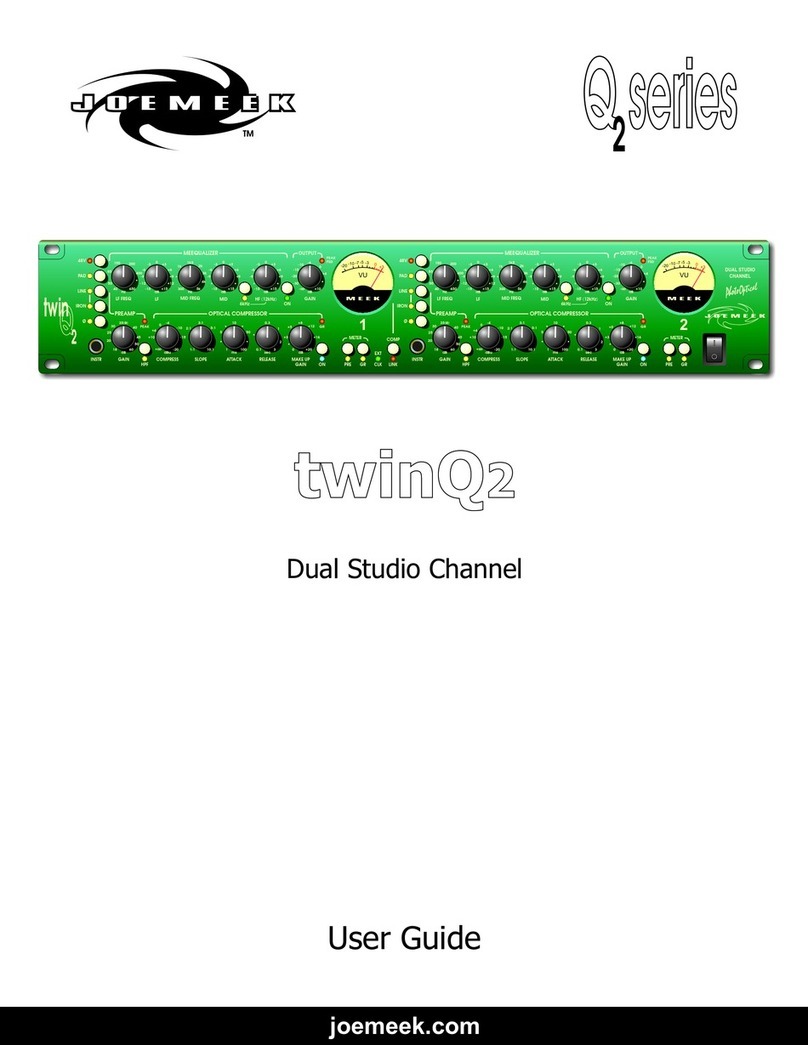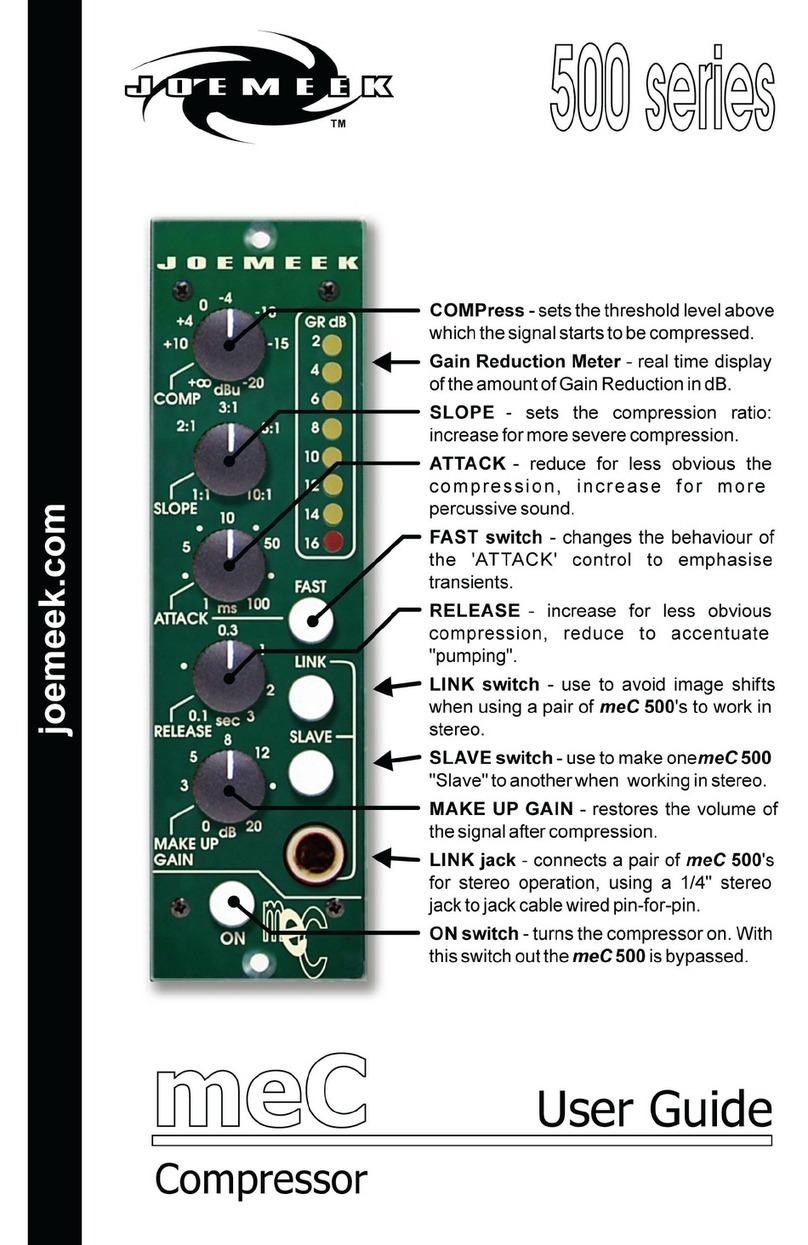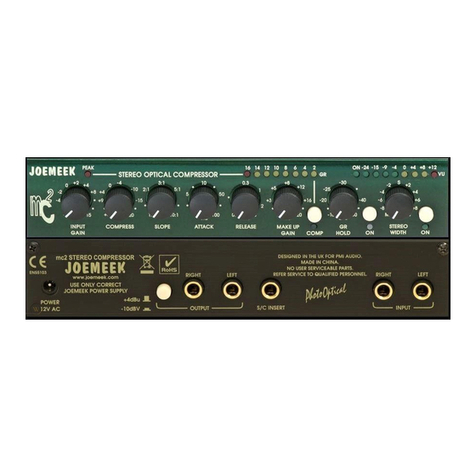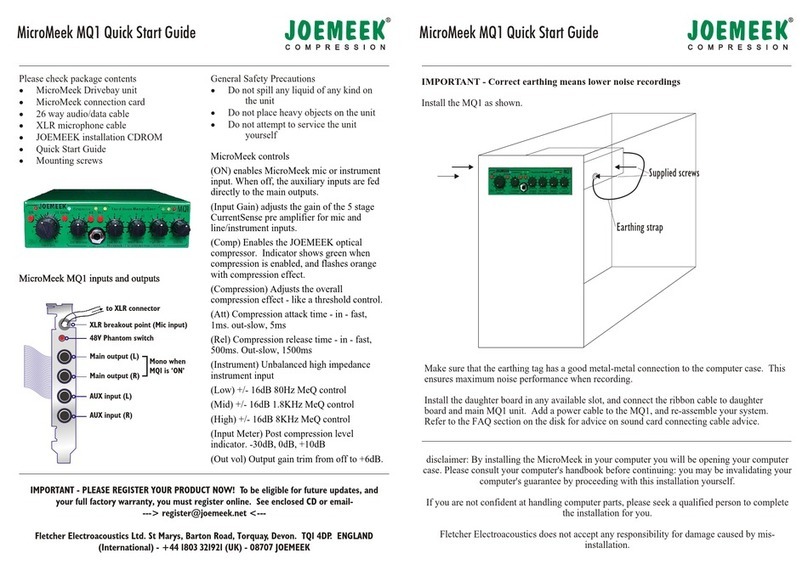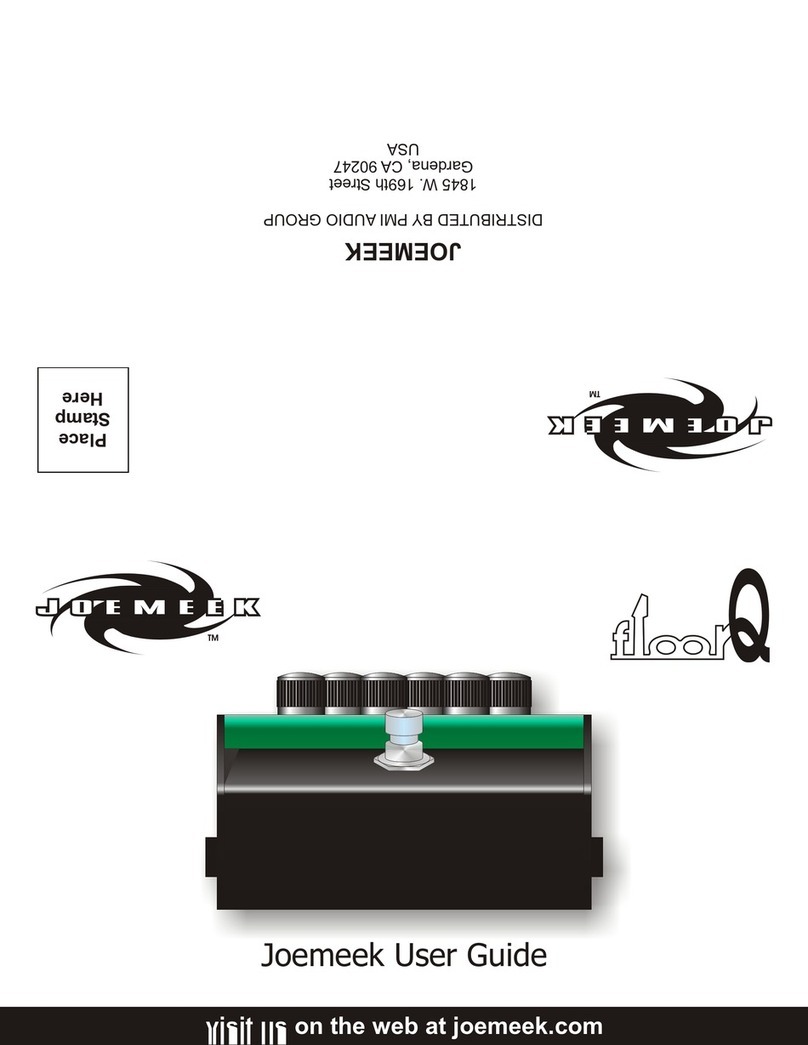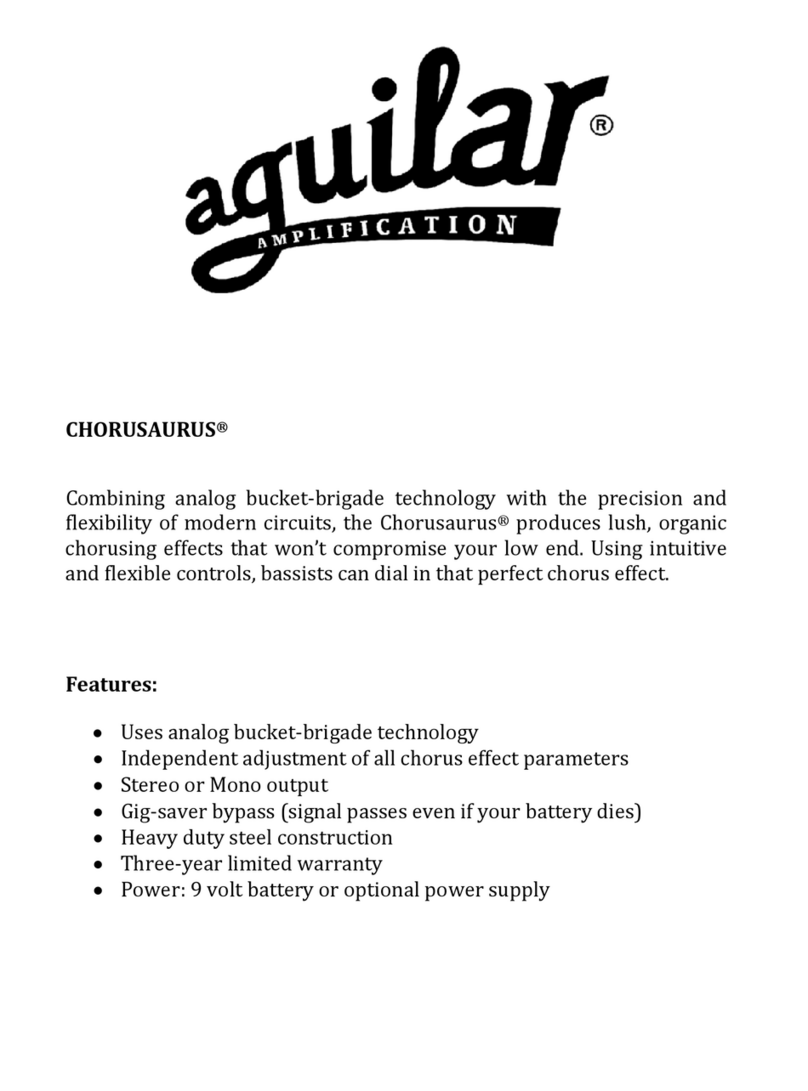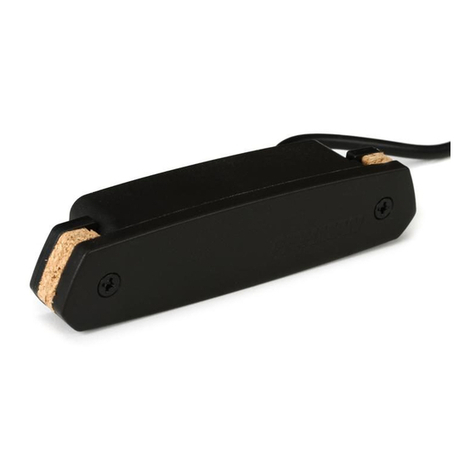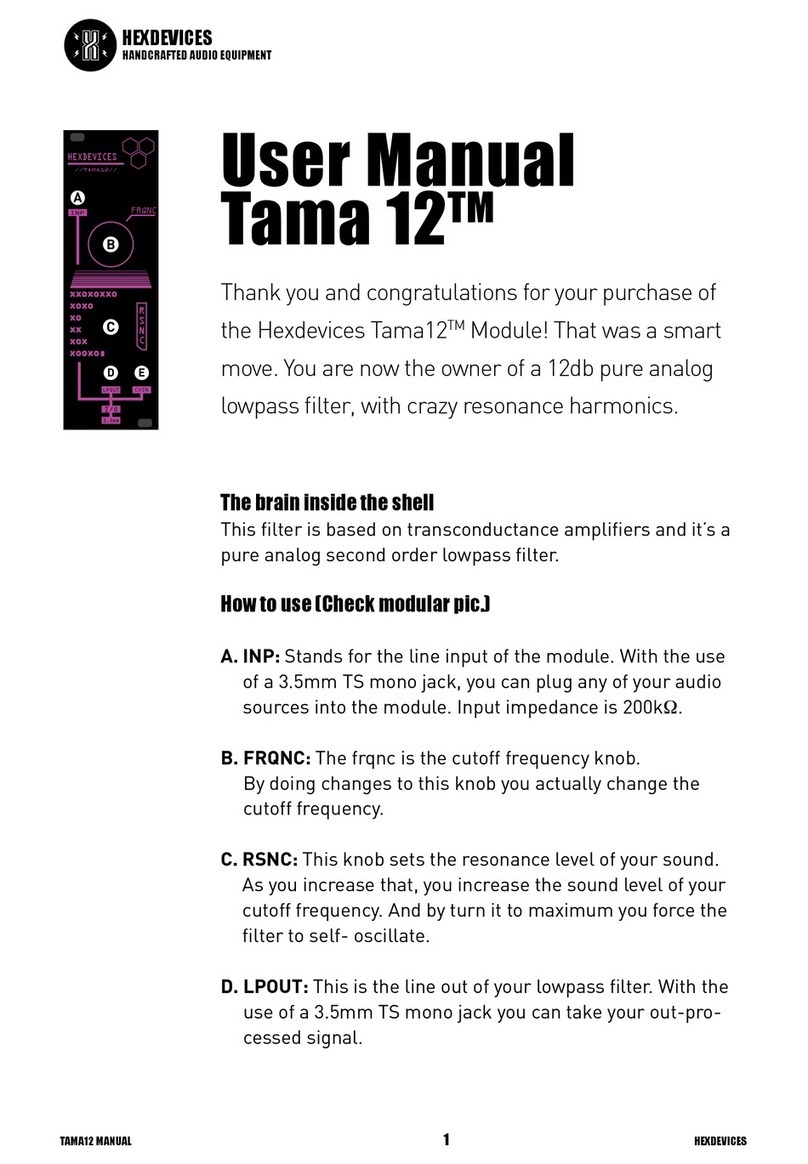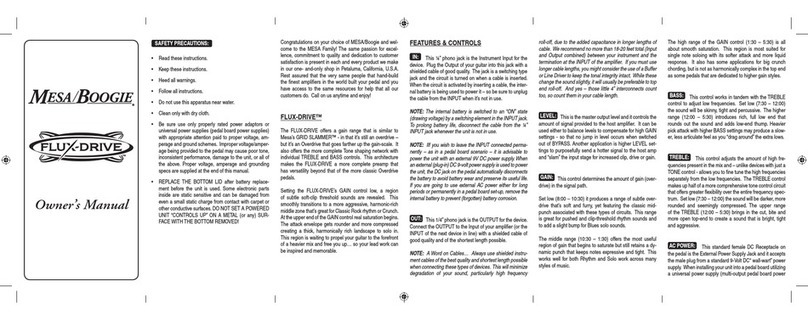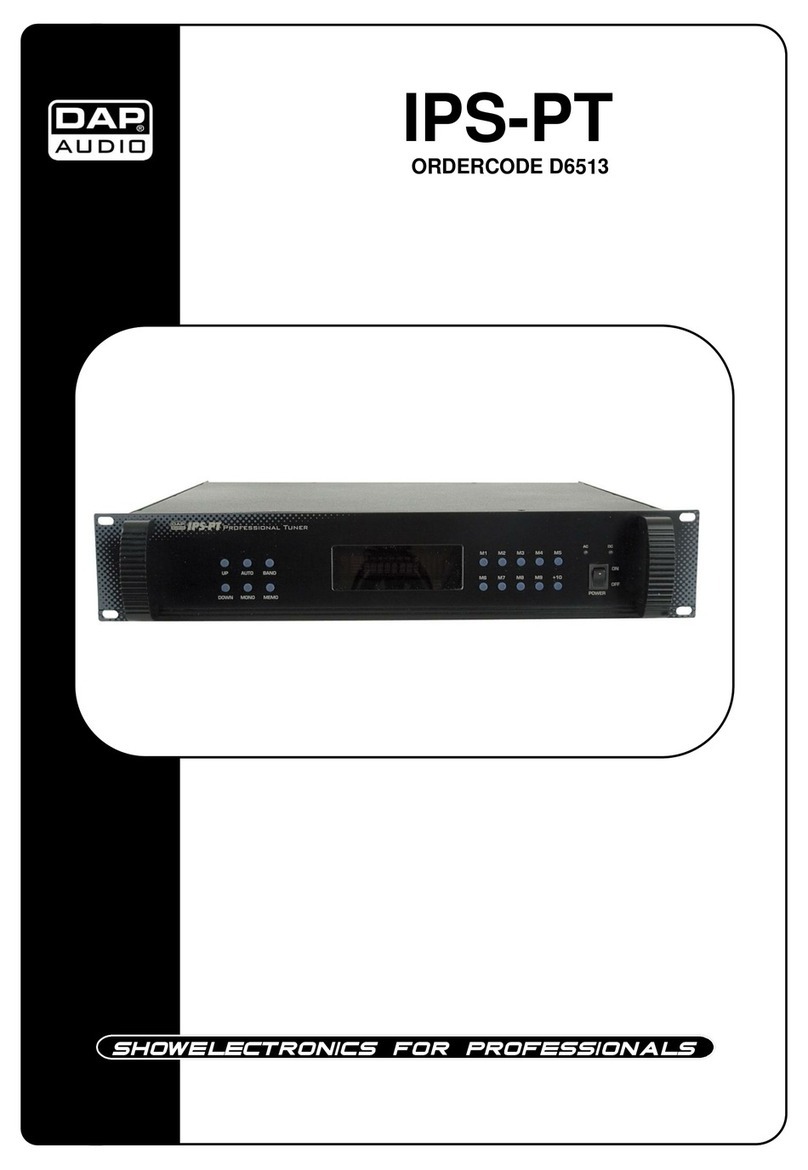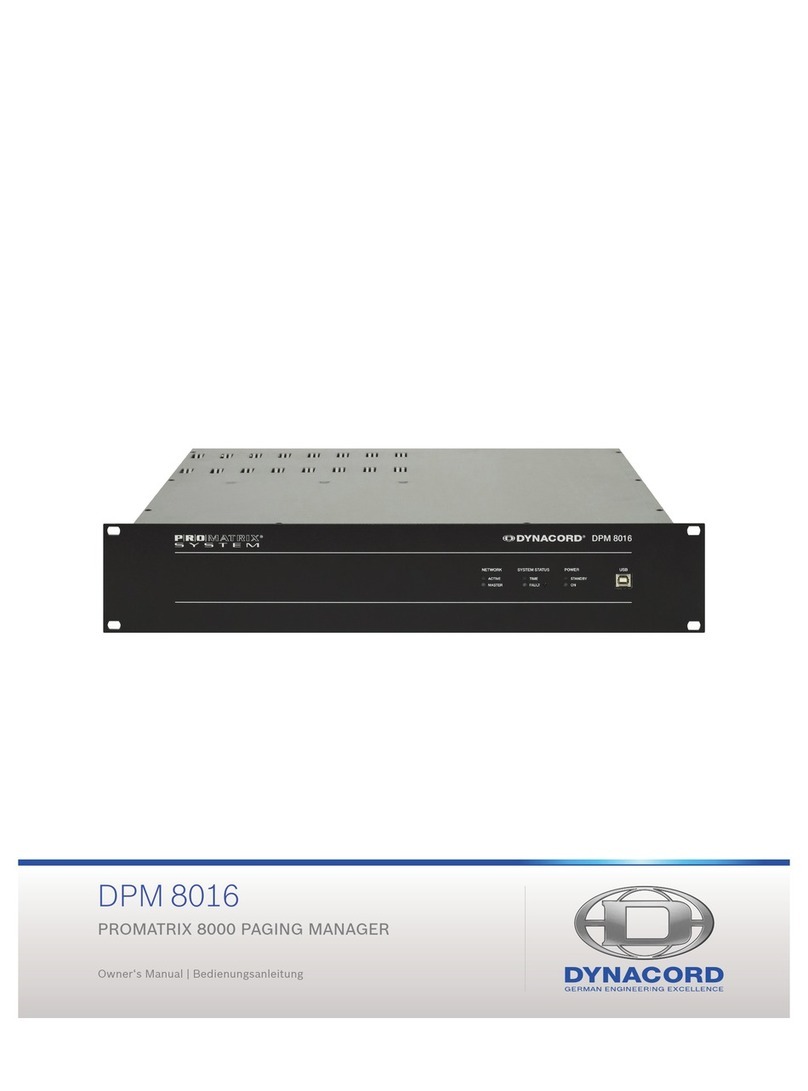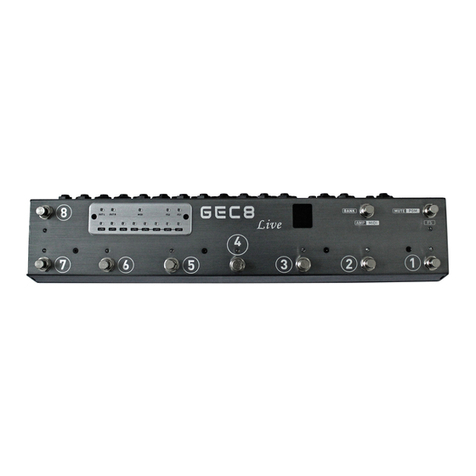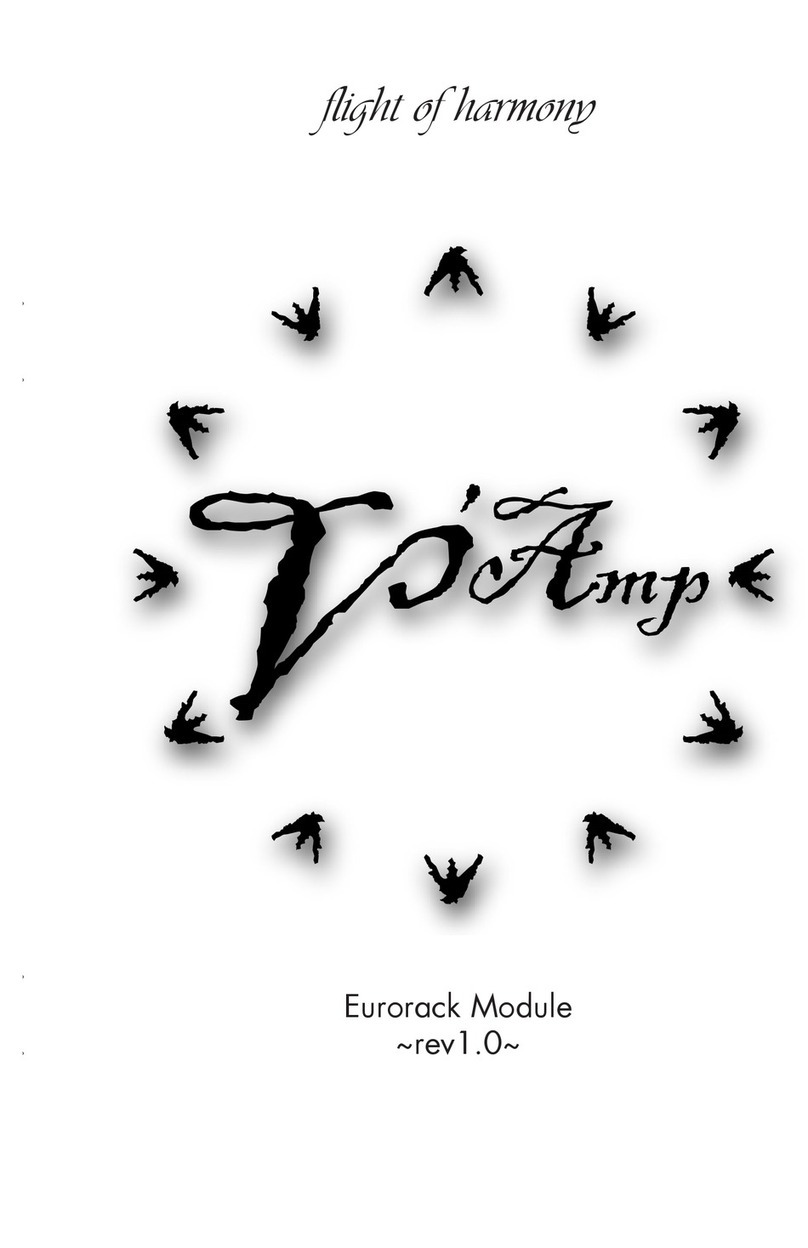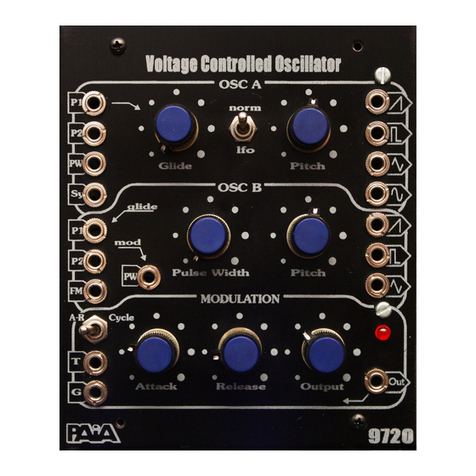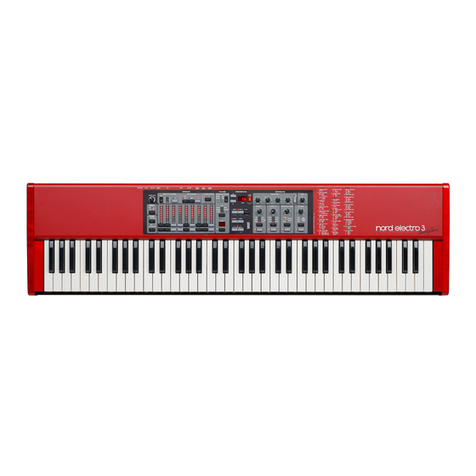VC2 4
BALANCED AND UNBALANCED
The JOEMEEK Tube Channel is designed to be used in the best larger
studios where most (if not all) interconnections are 'balanced'. Balanced
operation means that the audio is carried on two wires working in opposite
phase. Then should any interference appear on the 'line', it will be
effectively cancelled out. Both of the main inputs (Microphone and Line) and the line
output are accurately balanced to get best advantage from true balanced operation; but
unbalanced operation (for line level signals) will NOT degrade the performance unless
very long cables are used (above 50 metres).
OPERATING THE MICROPHONE AMPLIFIER.
Press in the 'MIC/LINE' switch, (in for MIC and out for LINE). Turn the INPUT GAIN
knob down to minimum then, If you are using a capacitor microphone, plug in the
microphone, then switch on the phantom power by pressing in the 'Phantom' switch.
(Do it in that order).
NOTE. The phantom power supply takes several minutes to reach its working voltage.
Remember to switch on at least 5 minutes before using the microphone.
CAUTION. When using phantom power, DO NOT USE UNBALANCED
MICROPHONES. It will damage (magnetise) the input transformer.
Turn up the INPUT GAIN until sound registers on the VU meter (VU switch in). Do not
let the VU needle hit the end stop too hard or overload may possibly happen. The meter
electronics has been adjusted so that it is normal for the needle to move in the red area.
OVERLOAD MARGIN AND THE VU. METER
For steady tones, the '0' on the VU meter corresponds to approximately 0dBu (Where
0dBu is 0.775v RMS on the line output with the output control set at '0')
This setting of '0' is to allow for the considerable under-read that occurs with all VU
meters with music signals. It is normal for the peaks of signals to go to +10dBu while
the VU meter reads only '0'.
In practice, when the VU meter is peaking at or just above '0' the music signal will be
well within normal limits and will have a significant overload margin.
